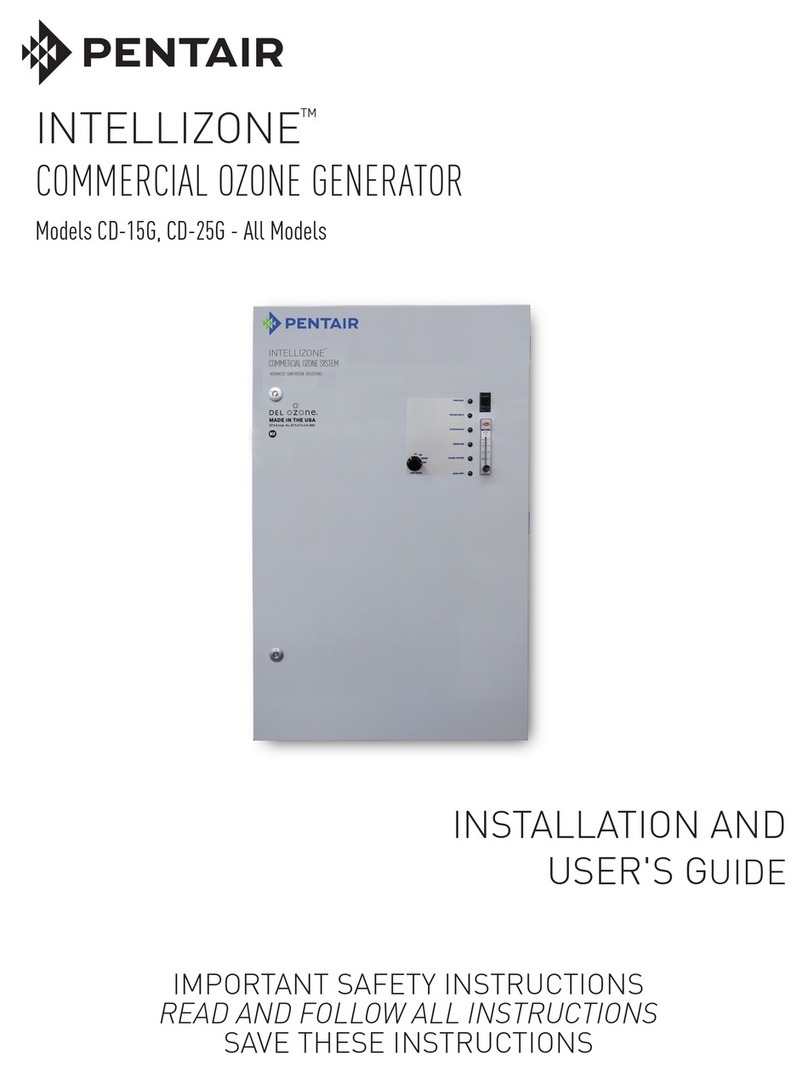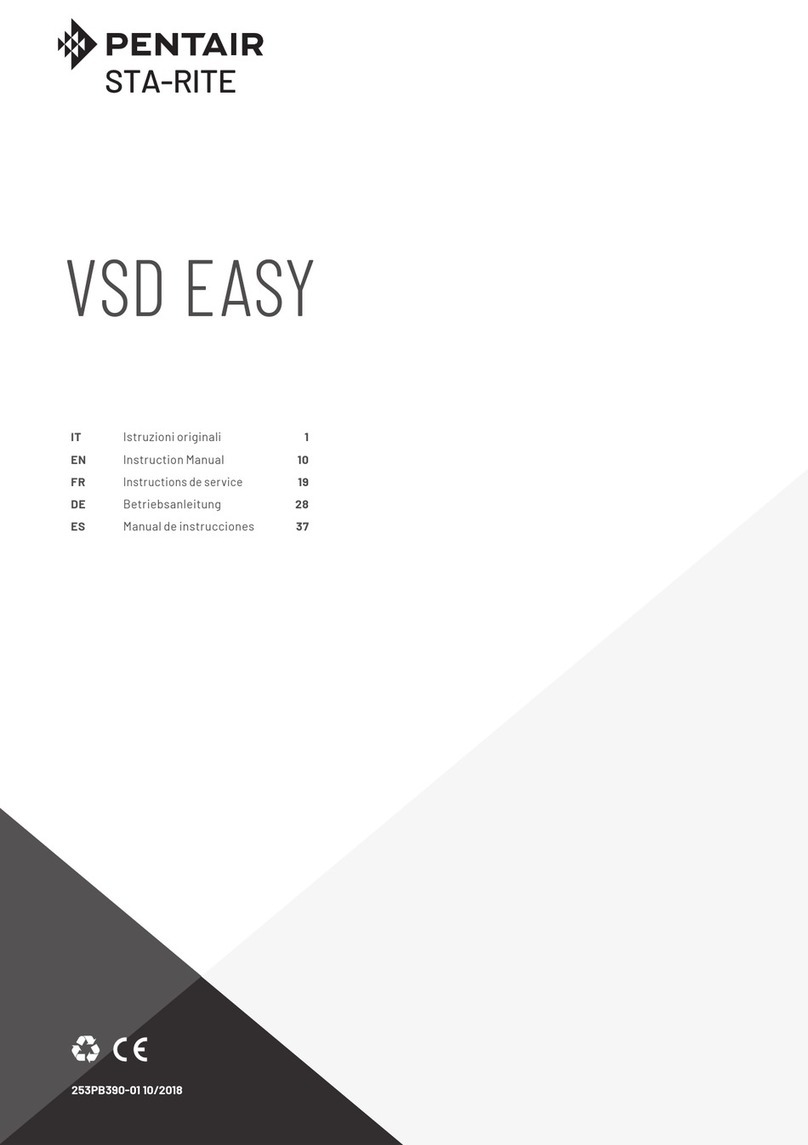IMPORTANT SAFETY
INSTRUCTIONS
Use basic safety precautions when using electrical equipment, including
the following:
Cautions:
Please note, the total working hours for the CFICGEN should be less than 8 hours total per day. If
you are using a variable speed pump for 24 hours a day be sure to adjust the chlorine output to 25-
30%. If the pump is only running 10 hours per day adjust the chlorine output between 60-80%.
You can use this calculation to calculate the appropriate chlorine output for your pool, suggest at 6
hours per day.
Pump running 24(Hours a day)*25%(Chlorine Output)=6hr (cell run time per day at 25%).
Pump running 20(Hours a day)*30%(Chlorine Output)=6hr (cell run time per day at 30%).
Pump running 15(Hours a day)*40%(Chlorine Output)=6hr (cell run time per day at 40%).
Pump running 12(Hours a day)*50%(Chlorine Output)=6hr (cell run time per day at 50%).
Pump running 8(Hours a day)*75%(Chlorine Output)=6hr (cell run time per day at 75%).
Start the VS pump on a low speed and kick the speed up until the salt system works.
ATTN: We are not affiliated with Pentair Pool Products, The use of above trademarks herein is for informational purposes
only.
READ AND FOLLOW ALL INSTRUCTIONS
•Disconnect all the AC power during installation.
•Children should not be permitted to use this product.
•To reduce the risk of personal injury, the power supply pack must be installed
on and wired to the load side of the time clock or relay load side.
•To reduce the risk of electric shock, the power supply pack must be grounded.
•All field-installed metal components such as rails, ladders, drains, or other
similar hardware located within 10 feet (3 meters) of the pool, spa, or hot tub
shall be bonded to the equipment grounding bus with copper conductors not
smaller than 8 AWG US/ 6 AWG Canada.
•Consult professional pool serviceman to advice you on proper use, especially
on material selection, installation advises, pool care. As the salt is an inherently
corrosive material, the CFICGEN cannot make sure any other pieces of
equipment in or around pool will not corrode.
•Avoid chlorine gas build up. When the pump is OFF, a buildup of flammable
gases will result in hazardous conditions.
•Add acid to water, do Not ever do opposite.





























